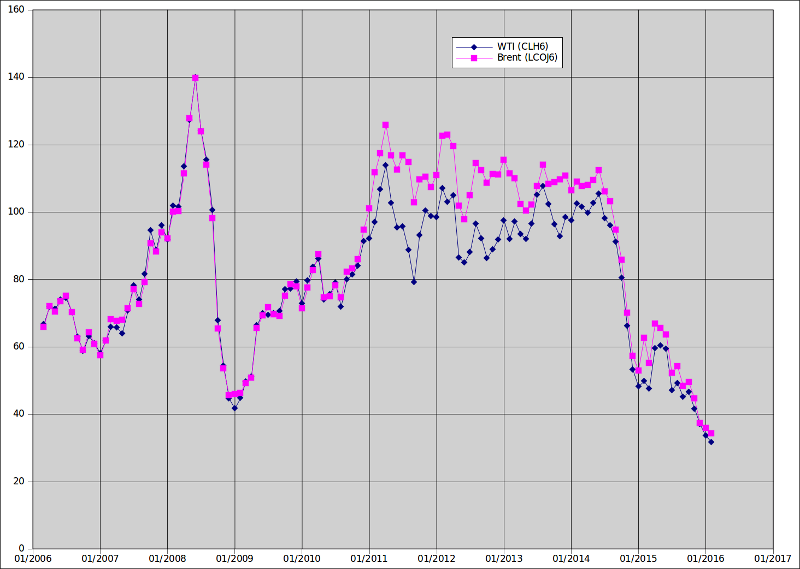Crude Oil
Crude oil can be classified mainly according to it’s density and according to it’s sulfur content.
The density measures how compact or concentrated the crude oil is. A light crude oil has a lower density and a heavy crude oil has a larger density. Light crude oil has relatively lower costs of extraction and refining. Gasoline and diesel fuel are cheaply produced from light crude oil.
Regarding the sulfur content, crude oil can be classified in sweet or sour. Crude oil is considered sweet if it has low sulfur content. Crude oil is consideres sweet if it contains less than 0.5% sulfur. The more sulfur content in crude oil, the lower it’s price, because it is more expensive to refine it. A sour crude oil has at least 1.1% sulfur level.
Reference Crude Oil
Crude oils from different regions is compared with some benchmarks with well known specifications. The most common benchmarks are Brent and WTI (West Texas Intermediate). Brent and WTI crude oil are light and sweet, but WTI is lighter and has less sulfur than Brent.
High quality crude oil can be found in Irak, Arabia and Texas.

Source: Oil and Gas Journal
Historical Evolution of WTI and Brent crude oil prices

Source: Investing.com